Study expands knowledge of wild bees and wasps in Canada’s disappearing prairie dune habitats
A Canadian Museum of Nature press release
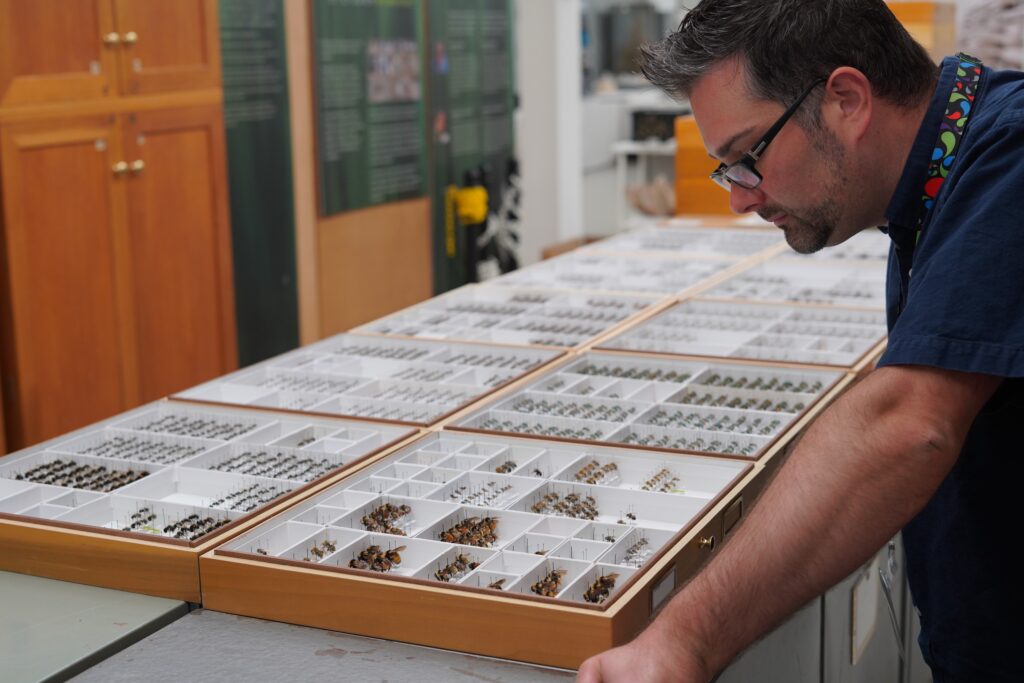 Thomas Onuferfko with some of the specimens collected as part of his study of bee and wasp diversity on prairie dunes.
Dan Smythe © Canadian Museum of Nature
Thomas Onuferfko with some of the specimens collected as part of his study of bee and wasp diversity on prairie dunes.
Dan Smythe © Canadian Museum of Nature
Ottawa, June 19, 2023 – Canada’s southern prairies are dotted with patches of active sand dunes, ecosystems that are slowly disappearing as they become overgrown and transformed into grasslands.
A new study of bees and wasps from these at-risk sites sheds light on changes to biodiversity in Canada’s prairie sandhills, which are increasingly being “stabilized” by plants that take root in the sand. The results are reported in the Royal Entomological Society journal Insect Conservation and Diversity.
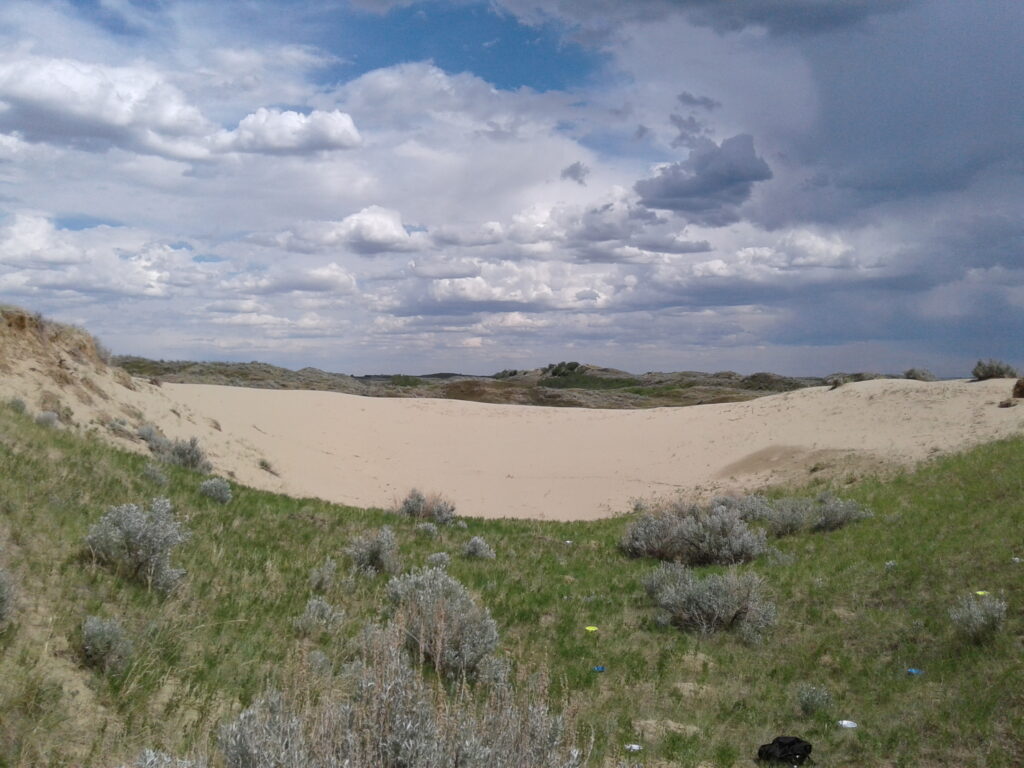 An active dune at Great Sandhills Ecological Reserve in Saskatchewan with stabilized zones in the foreground and in behind.
Thomas Onuferko ©
Canadian Museum of Nature
An active dune at Great Sandhills Ecological Reserve in Saskatchewan with stabilized zones in the foreground and in behind.
Thomas Onuferko ©
Canadian Museum of Nature
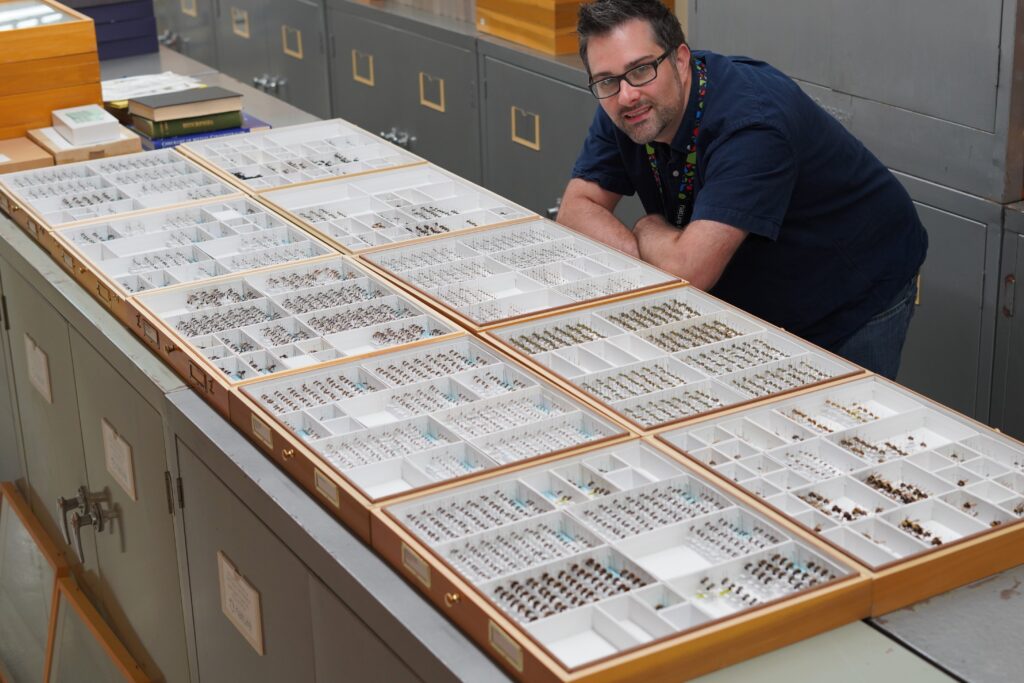 Thomas Onuferko with some of the more than 12,000 specimens he collected for his study of bee and wasp diversity of the Canadian prairie sandhills.
Dan Smythe © Canadian Museum of Nature
Thomas Onuferko with some of the more than 12,000 specimens he collected for his study of bee and wasp diversity of the Canadian prairie sandhills.
Dan Smythe © Canadian Museum of Nature
Dr. Thomas Onuferko, an entomologist and research associate with the Canadian Museum of Nature, found that while the overall numbers of bee and wasp species did not change much among dunes at different stages of vegetative stabilization, the types of species and their relative abundances did change.
“Species that were not present on active dunes all of a sudden show up on stabilized dunes, and then some species on active dunes don’t show up on stabilized ones,” he explains. The abundances of certain wasps, most notably those specialized to live on the open sandy dunes, decreased with increased colonization of the dunes by plants.
Dr. Thomas Onuferko
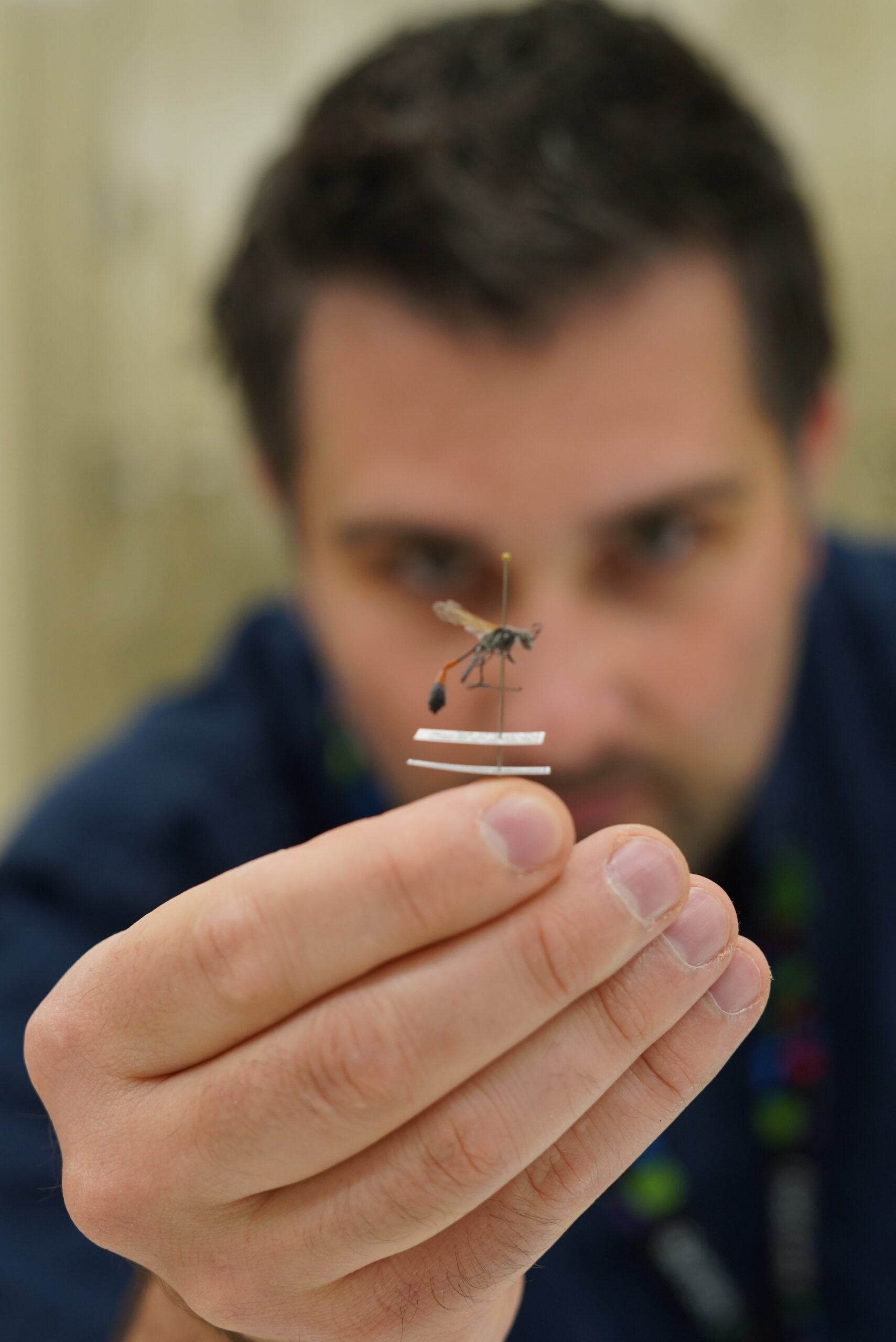 Thomas Onuferko holding a specimen of Ammophila harti, a sand specialist wasp collected as part of this 2019 fieldwork in the dunes.
Dan Smythe © Canadian Museum of Nature
Thomas Onuferko holding a specimen of Ammophila harti, a sand specialist wasp collected as part of this 2019 fieldwork in the dunes.
Dan Smythe © Canadian Museum of Nature
The research is based on careful examination and analysis of more than 12,300 specimens of wild bees and stinging wasps collected by Onuferko at the dunes over four months in the spring and summer of 2019. As a post-doctoral research fellow with the museum’s Beaty Centre for Species Discovery, he visited 13 dune sites (each five times) across southeastern Alberta, southern Saskatchewan, and southwestern Manitoba.
Areas surveyed included the Great Sandhills Ecological Reserve and Douglas Provincial Park in Saskatchewan, as well as Spruce Woods Provincial Park, an important refuge for rare species in southwestern Manitoba. Of the 13 sites, eight were active dunes with large areas of open sand, three were stabilized with no patches of open sand, and two were in intermediate stages of stabilization with patches of open sand among largely vegetated areas.
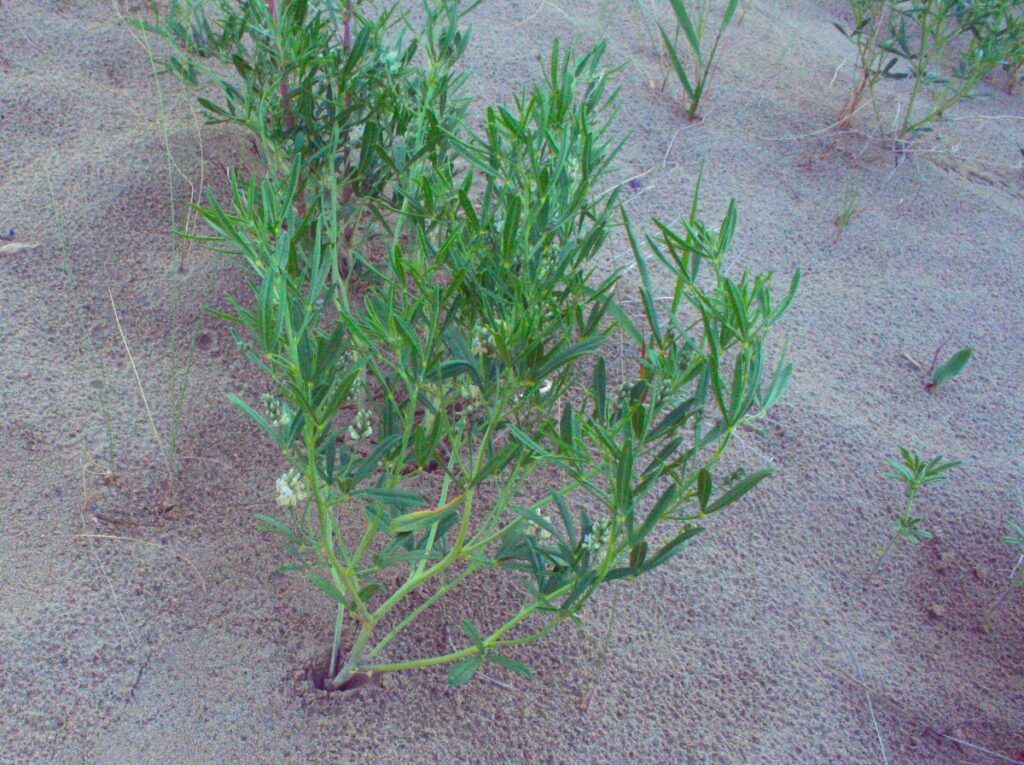 Dune scurpfea (Psoralidium lanceolatum) is an early successional plant found in the dunes.
In addition to assessing the bee and wasp diversity, the study identified 18 species of plants among the dunes in various degrees of stabilization.
Thomas Onuferko ©
Canadian Museum of Nature
Dune scurpfea (Psoralidium lanceolatum) is an early successional plant found in the dunes.
In addition to assessing the bee and wasp diversity, the study identified 18 species of plants among the dunes in various degrees of stabilization.
Thomas Onuferko ©
Canadian Museum of Nature
 Neolara vigilans, a cuckoo bee from Manitoba, collected by Onuferko as part of his study.
Thomas Onuferko ©
Canadian Museum of Nature
Neolara vigilans, a cuckoo bee from Manitoba, collected by Onuferko as part of his study.
Thomas Onuferko ©
Canadian Museum of Nature
The insects were collected with relatively simple techniques. Most were caught in coloured plastic bowls that were filled with soapy water and placed at specific distances each day. Smaller numbers were collected in a handheld insect net.
Onuferko was assisted in the identification of the wasps and bees by study co-authors Dr. Matthias Buck, an expert on aculeate (stinging) wasps at the Royal Alberta Museum, and Professor Jason Gibbs, an entomologist and bee expert at the University of Manitoba.
Determination of new wasp records was conducted by Buck and informed by independent ongoing work on spheciform, vespoid, and chrysidoid wasps in conjunction with the Checklist of Hymenoptera of Canada, Alaska and Greenland. The data from this study were also included in a recently published checklist of the bees of Manitoba led by Gibbs and co-authored by Onuferko and eight other collaborators.
In their task of comparing species assemblages and abundances across the range of transforming dune habitats, the team identified 374 species of bees and wasps among their samples. Of these, 150 species represent previously unknown records from at least one of the provinces in which they were sampled. There are 16 new records for Canada and several potentially undescribed species of bees and wasps.
Among the previously undescribed species is a new sweat bee specialized to open dunes, Lasioglossum onuferkoi. It was named after Onuferkoby Gibbs and his Ph.D. student Joel Gardner in a taxonomic revision published in 2022. Somewhat surprisingly, Onuferko had collected 360 specimens of the elusive species, which he attributes to focussing on the isolated sandy sites in a relatively small area of Canada.
 Lasioglossum onuferkoi habitus lateral female – nontype
Lasioglossum onuferkoi habitus lateral female – nontype
The study also belies a larger lesson about the need for continuing biodiversity surveys of endangered habitats.
“While the results are not really unexpected, this study illustrates that more work needs to be done in this region. Now that we know more about the diversity of bees and wasps in these habitats, it might make sense to look at other understudied groups of insects, and this study provides a baseline for any future surveys,” says Onuferko.
Dr. Thomas Onuferko
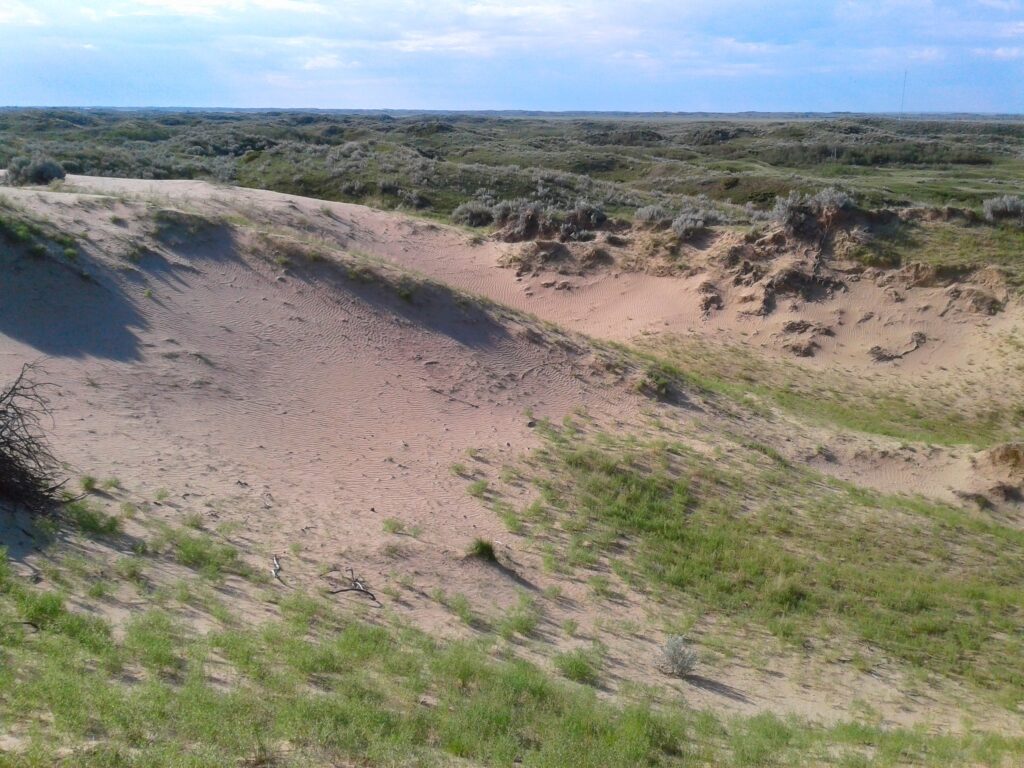 An active dune at Great Sandhills Ecological Reserve in Saskatchewan.
Thomas Onuferko ©
Canadian Museum of Nature
An active dune at Great Sandhills Ecological Reserve in Saskatchewan.
Thomas Onuferko ©
Canadian Museum of Nature
 Ammophila hari, a sand specialist wasp collected by Onuferko as part of his study. Thomas Onuferko ©
Canadian Museum of Nature
Thomas Onuferko ©
Canadian Museum of Nature
Ammophila hari, a sand specialist wasp collected by Onuferko as part of his study. Thomas Onuferko ©
Canadian Museum of Nature
Thomas Onuferko ©
Canadian Museum of Nature
About the sand dune habitats
- The active sand dunes in the Canadian Prairies are home to diverse plant and animal species specialized for life on sand (called psammophiles, meaning ‘sand loving’).
- The dunes in this region formed during glacial periods in the Pleistocene when grinding ice sheets reduced bedrock to silt, sand, and gravel.
- The remaining dunes are islands of biodiversity and home to a variety of species of plants, animals (e.g., kangaroo rats), insects, and spiders that have been assessed as rare, threatened, or endangered within Canada.
- Prior to this study, little was known about dune-dependent arthropods in this region, other than some small groups like tiger beetles and moths.
- Grasses and dune scurpfea (Ladeania lanceolota) were the dominant plants on the dunes, and are among the 18 species of plants in the sampling localities which were identified by Canadian Museum of Nature botanist and study co-author Paul Sokoloff.
- Predatory wasps also use them as hunting grounds.
- Some bee species might only be found on dunes because the plants from which they prefer to collect pollen are only found growing on the dunes or at their edges.
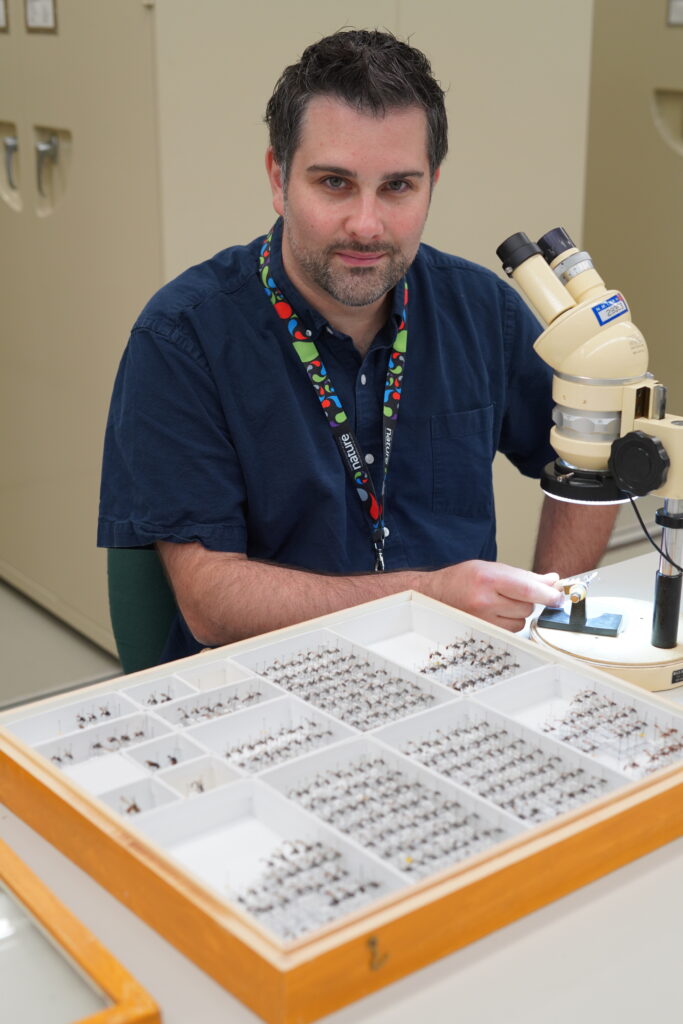 Thomas Onuferfko with some of the specimens collected as part of his study of bee and wasp diversity on prairie dunes. Dan Smythe © Canadian Museum of Nature
Thomas Onuferfko with some of the specimens collected as part of his study of bee and wasp diversity on prairie dunes. Dan Smythe © Canadian Museum of Nature
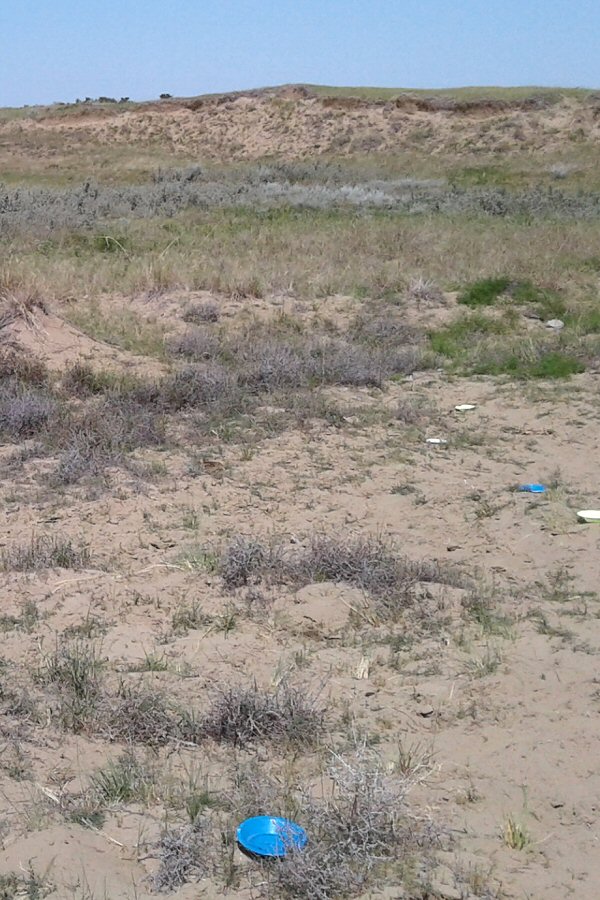 A dune at an intermediate stage of stabilization. Onuferko placed coloured bowls with soapy water to collect his specimens.
Thomas Onuferko ©
Canadian Museum of Nature
A dune at an intermediate stage of stabilization. Onuferko placed coloured bowls with soapy water to collect his specimens.
Thomas Onuferko ©
Canadian Museum of Nature
About the Canadian Museum of Nature
The Canadian Museum of Nature, Canada’s national museum of natural history and natural sciences, provides evidence-based insights, inspiring experiences, and meaningful engagement with nature’s past, present and future. It achieves this through scientific research, a collection of 14.6 million specimens and artifacts, education programs, signature and travelling exhibitions, and a dynamic web site, nature.ca.
Information for media, including images:
Dan Smythe
Media Relations
Canadian Museum of Nature
613-698-9253; dsmythe@nature.ca